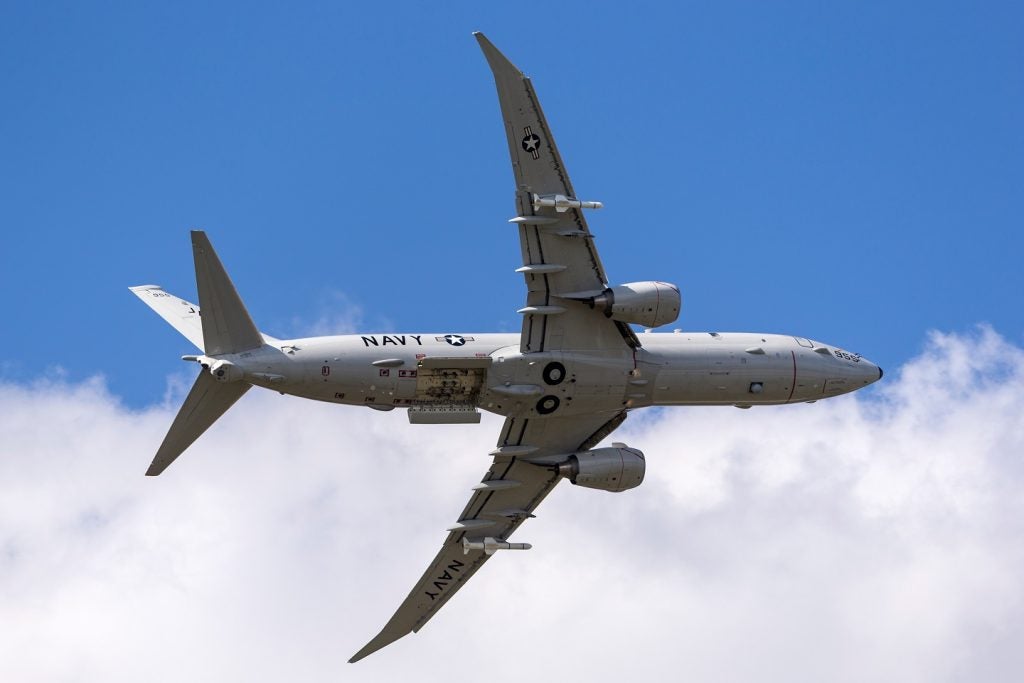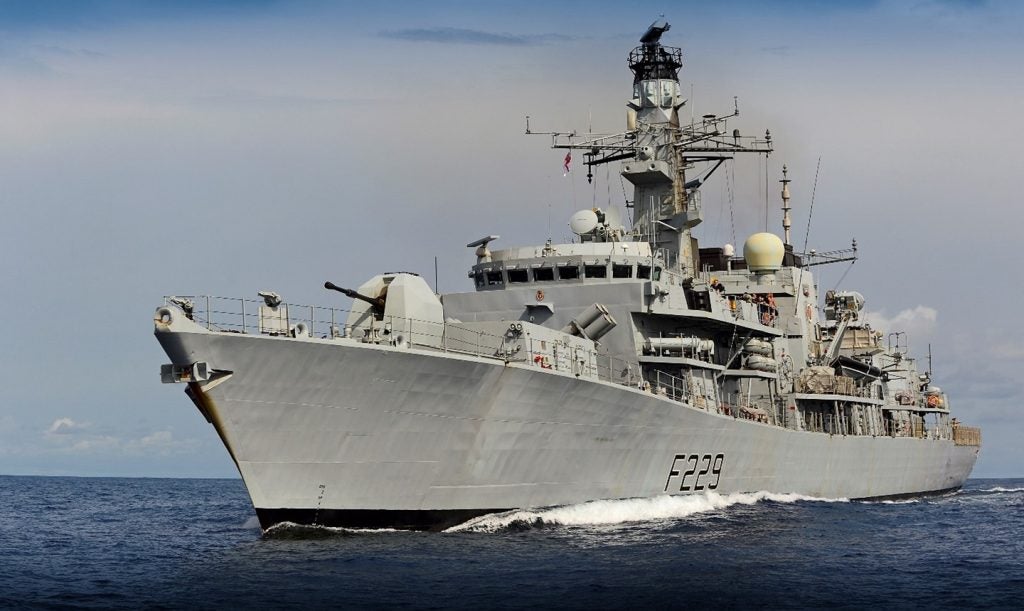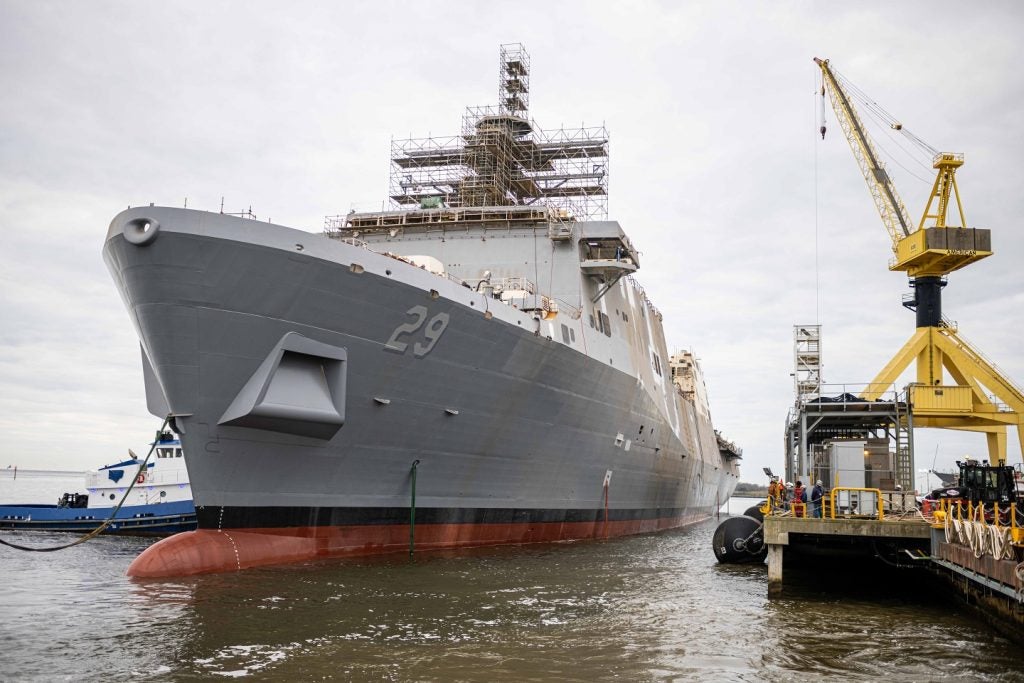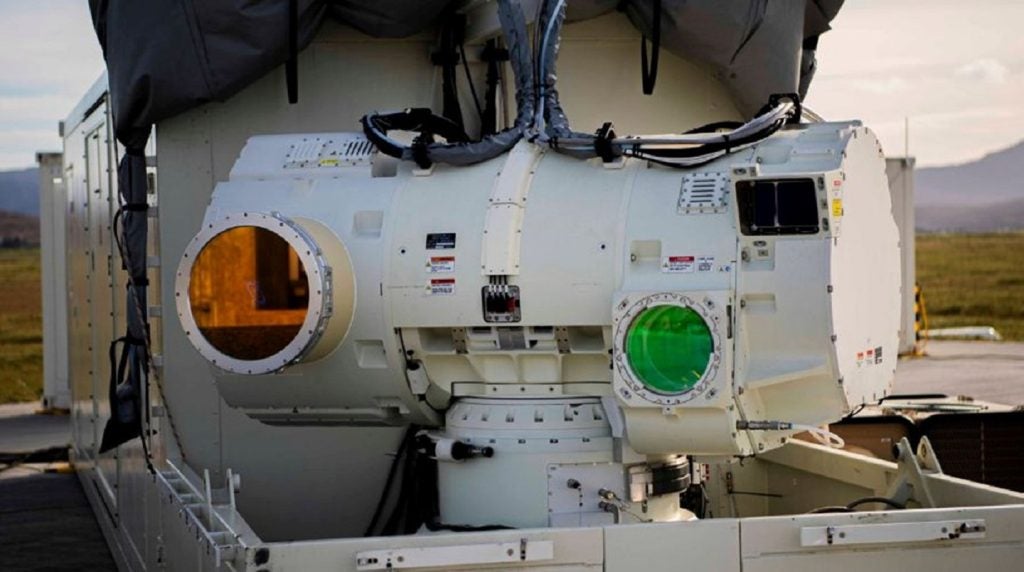
The systems, known as ‘cats and traps’, would likely be fitted to the UK’s new Queen Elizabeth-class aircraft carriers to increase the combat mass of the UK’s F-35Bs by augmenting them with uncrewed aerial vehicles (UAVs).
While the system could potentially launch other fighter aircraft, any order of a new seaborne fighter would likely take years to progress and the UK has already ordered 48 F-35B jets.
Instead, the cats and traps would likely support the future operation of UAVs from the two aircraft carriers for airborne early warning (AEW) and potential airborne aerial refuelling (AAR) roles.
The RFI reads: “The Ministry of Defence (The “Authority”) is currently seeking information in order to qualify requirements and develop our understanding of the potential for the market to provide assisted launch and arrested recover for a range of air vehicles, which would be suitable to fit to a vessel within 3 – 5 years.
“This is to support the development of the RN’s Future Maritime Aviation Force (FMAF) with potential for use with both crewed and uncrewed air vehicles.”
Responses to the study could be used to inform future decisions on potential air vehicle choices made by the Royal Navy. The Royal Navy does not have any existing large fixed-wing UAVs and drones already in-service across the armed forces would need substantial modifications to operate from carriers.
How well do you really know your competitors?
Access the most comprehensive Company Profiles on the market, powered by GlobalData. Save hours of research. Gain competitive edge.

Thank you!
Your download email will arrive shortly
Not ready to buy yet? Download a free sample
We are confident about the unique quality of our Company Profiles. However, we want you to make the most beneficial decision for your business, so we offer a free sample that you can download by submitting the below form
By GlobalDataUnder the RFI, the MOD said the potential arrestor should ideally offer a max trap of max trap 21,319kg (47,000lbs) include an energy damping method and offer the potential for energy reclamation. The potential catapult would ideally launch aircraft of up to 24,948kg (55,000lbs).
The weight limit of the traps would be below that needed to catch well-equipped carrier aircraft like the F-18 or F-35C.
 USS Gerald R. Ford’s electromagnetic aircraft launch system (EMALS) undergoes no-load testing on the ship’s flight deck. Image: US Navy.
USS Gerald R. Ford’s electromagnetic aircraft launch system (EMALS) undergoes no-load testing on the ship’s flight deck. Image: US Navy.
In a statement, a Royal Navy Spokesperson told Naval Technology: “The Royal Navy is committed to ensuring it is ready to confront future wars and is exploring the use of novel and innovative technologies including uncrewed air systems.
“This tender is purely an information-gathering exercise to gauge existing technology and it is not an indication of intent of further procurement activity.”
Currently, the UK is to develop a so-called ‘Loyal Wingman’ UAV designed to support the F-35, Typhoon and Tempest Future Combat Air System. A maritime variant of the uncrewed aircraft could support future carrier strike operations.
The Royal Navy Spokesperson added: “The Armed Forces regularly conduct fact-finding exercises with industry partners to understand the latest technological developments and how they can improve existing equipment to meet future threats.”
It is possible that the ongoing Tempest project to deliver a replacement for the Eurofighter Typhoon from 2035 could produce a carrier-capable aircraft.
The RFI is part of a wider push to incorporate more UAVs into its air vehicle fleet across most of its warfighting vessels. It is understood that at this stage no further discussions with industry about the potential cats and traps are planned.
Naval Technology understands that the RFI is part of the Royal Navy’s standard process to understand what industry can deliver and is not related to the soon to be published Integrated Review of Security, Defence, Development and Foreign Policy.







